Codes Corner: Smoke Barriers vs Smoke Partitions
A common source of confusion in regards to firetopping requirements is understanding the seemingly subtle differences between smoke barriers and smoke partitions. During the FIT Level 2 Training courses that STI offers we always devote some of our discussions to help shed some light on the important features associated with each of these assembly types. The article that follows is an overview for those who might not have enjoyed the benefit of attending our FIT Training or simply want more details on this important topic.
 Smoke barriers are defined in both the International Building Code (IBC) and the NFPA 101 Life Safety Code. The editions of these codes that we are focusing our discussion around are from 2015, but previous and subsequent editions feature similar language. Chapter 2 of the IBC defines a smoke barrier as follows, “A continuous membrane, either vertical or horizontal, such as a wall, floor or ceiling assembly, that is designed and constructed to restrict the movement of smoke.” Section 3.3.31.2 of NFPA 101 reads, “A continuous membrane, or a membrane with discontinuities created by protected openings, where such membrane is designed and constructed to restrict the movement of smoke.”
Smoke barriers are defined in both the International Building Code (IBC) and the NFPA 101 Life Safety Code. The editions of these codes that we are focusing our discussion around are from 2015, but previous and subsequent editions feature similar language. Chapter 2 of the IBC defines a smoke barrier as follows, “A continuous membrane, either vertical or horizontal, such as a wall, floor or ceiling assembly, that is designed and constructed to restrict the movement of smoke.” Section 3.3.31.2 of NFPA 101 reads, “A continuous membrane, or a membrane with discontinuities created by protected openings, where such membrane is designed and constructed to restrict the movement of smoke.”
Smoke partitions are not formally defined within the IBC. However, the entirety of Section 710 within Chapter 7 of the IBC is dedicated to the presentation of smoke partitions. NFPA 101 offers the following definition of smoke partitions from Section 3.3.256, “A continuous membrane that is designed to form a barrier to limit the transfer of smoke.” The definitions of smoke barriers and smoke partitions presented within the building codes certainly do not offer any glaring differences to separate the two types of assembly.
 The primary difference between smoke barriers and smoke partitions originates from their required fire-resistance ratings. Section 709.3 of the IBC establishes the requirement for smoke barriers to possess a 1-hour fire-resistance rating. Conversely, when the fireresistance rating of smoke partitions is discussed within Section 710.3 of the IBC these assemblies are not required to have such a rating. The fire-resistance requirements are not spelled out as explicitly withinNFPA 101. However, in general the Life Safety Code does require smoke barriers to have a minimum hourly fire-resistance rating while smoke partitions typically do not require any specific fire-resistance rating.
The primary difference between smoke barriers and smoke partitions originates from their required fire-resistance ratings. Section 709.3 of the IBC establishes the requirement for smoke barriers to possess a 1-hour fire-resistance rating. Conversely, when the fireresistance rating of smoke partitions is discussed within Section 710.3 of the IBC these assemblies are not required to have such a rating. The fire-resistance requirements are not spelled out as explicitly withinNFPA 101. However, in general the Life Safety Code does require smoke barriers to have a minimum hourly fire-resistance rating while smoke partitions typically do not require any specific fire-resistance rating.
When selecting an appropriate firestopping system suitable for installation in a smoke barrier it is critical to remember that the associated fire-resistance rating of the assembly mandates a system and firestop product(s) that meet the requirements of ASTM E814 or UL 1479. The IBC also speaks to the allowable leakage rate permitted through smoke barriers requiring L Ratings do not exceed 5.0 CFM per square foot of penetration opening for each penetration or a total cumulative leakage of 50 cfm for any 100 square feet of wall or floor area. NFPA 101 requires that smoke barriers restrict the transfer of smoke, but does not offer any specific evaluation criteria. Both Codes have language requiring smoke partitions limit the passage/transfer of smoke, but suggest no acceptable thresholds. Overall, smoke barriers are more substantial assemblies relative to smoke partitions, and will have an hourly fire-resistance rating associated with them and potentially the need for a verifiable L Rating for any penetrations within the smoke barrier.






